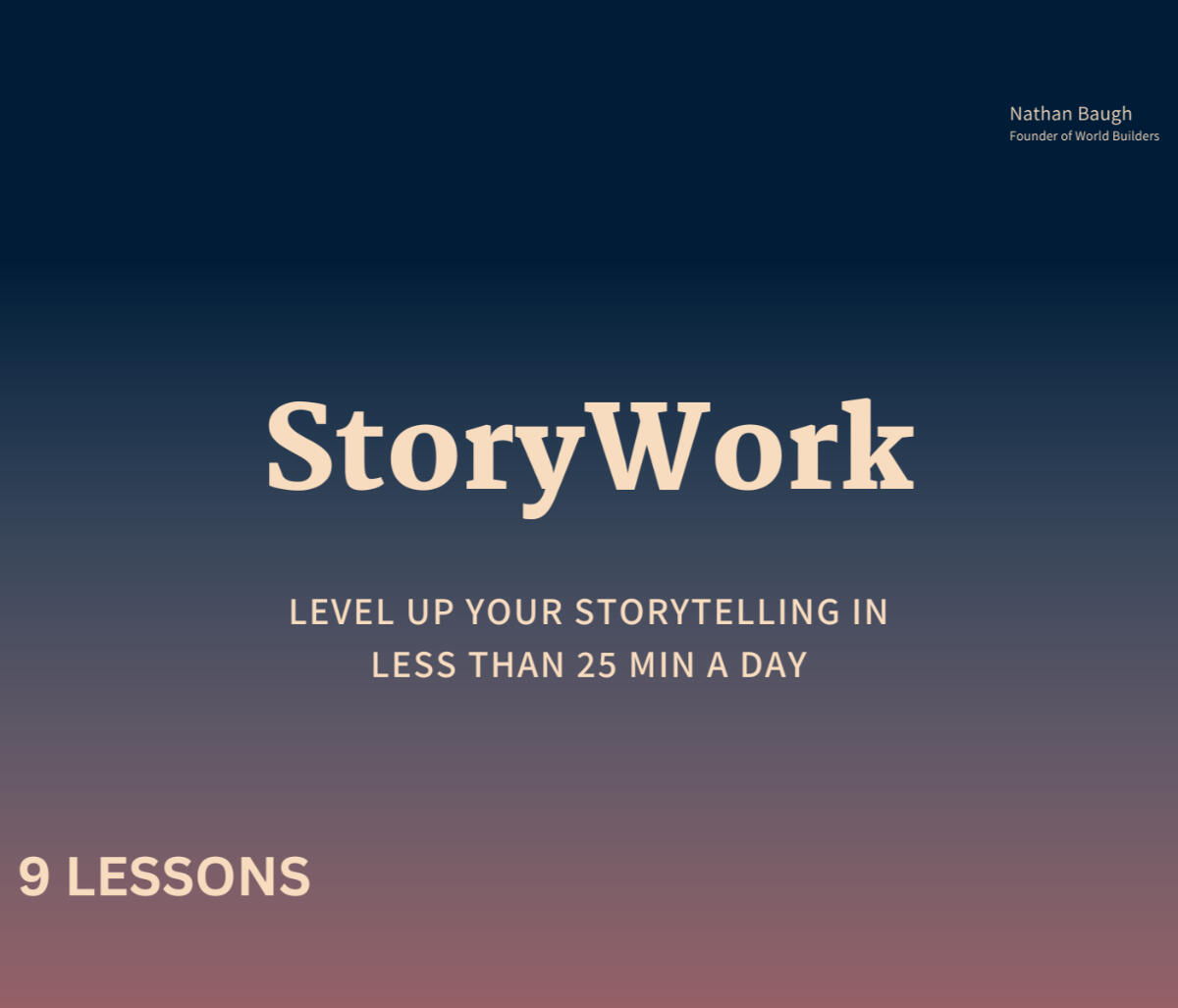- World Builders
- Posts
- Open Endings
Open Endings
Christopher Nolan’s go-to technique to end a story
Hey — Nathan here.
Been geeking out over Christopher Nolan movies recently, specifically Inception. That darn top…
Today’s hook comes from a 2020 book destined to become a classic. Hit me back with your best guess:
“I spent my college years working as a valet at a nice hotel in Los Angeles.”
Last week’s answer: The Godfather

An ending without an ending. One of Christopher Nolan’s favorite techniques.
I’ll break it down, but let’s look at a famous example first:
Cobb hops in and out of dreams. Dreams within dreams within dreams.
He steals knowledge and plants ideas, pulling off heist after heist.
He spins his top to know if he’s in a dream or reality. It spins indefinitely, in a dream. It falls, reality.
After completing his mission, Cobb returns to his dad’s home. His wife’s there. So are his kids.
Just as he’s going to play with his kids, Cobb spins the top.
The top gives a slight wobble, but the scene fades to black before we see if it falls.
Dream or reality?
This is called an “Open Ending.” The main plot points are wrapped up. We know how the story ends. But you get the sense that the broader story could continue. The world didn’t stop existing.
One loop remains open.
These endings are dangerous. They can make an audience unsatisfied, annoyed, or confused, even if you nail the rest of your story.
But if you get them right, you leave the audience clamoring for more, curious about what happens next, debating with their friend what exactly happened at the end.
Is Cobb still in a dream? No, the top definitely wobbles. Can you be sure? We never saw it fall…
Christopher Nolan does a similar little trick in The Dark Knight Rises.
Batman defeats Bane, finds the bomb threatening Gotham, and uses the Bat plane to carry the bomb into the sunset. The plane blows up. We think Batman’s dead.
But Lucius discovers autopilot had been fixed on the plane. And then Alfred goes to Italy, and sees Bruce Wayne sipping a coffee at a cafe in Florence.
Or, that’s what it shows us. But that’s also the dream Alfred has earlier in the series for Bruce.
Nolan never tells the audience if Batman is dead or alive. Another “open ending.”
But notice that these are not cliffhangers. Cliffhangers happen when you, the storyteller, teases action or tension to come in the main plot line. With an Open Ending, the main plot has been wrapped up. Though they deal with important points (Is Cobb still in Limbo? Is Batman alive?), the actual Promise of the story has been Paid.
Other stories have closed endings. Everything is given to the audience with a nice little bow on top. Neat as you please.
But Open Endings spark the imagination. That one question plays with your mind, forcing you to fill in that gap in the story with your own rendition.
Personally, I think the top falls to the table moments after the screen goes black.
What about you?
– Nathan
If you liked this piece, subscribe below with one click!

A message from... Me!
The interest in this tweet blew me away...
One way to become a better storyteller:
Take your two favorite authors. I recommend one non-fiction and one fiction.
Copy, word for word, their best work. Do it by hand.
I chose Paul Kalanithi and Neil Gaiman.
It’s the single exercise that improved my writing the most.
— Nathan Baugh 🗺️ (@nathanbaugh27)
3:06 PM • Jan 5, 2023
In my experience, there are two ways to get good at storytelling:
Study the greats (what this newsletter is for)
Practice, practice, practice
I do a lot of practice through StoryWork.
And so many of you liked, commented, and sent me DMs about the practice I decided to turn it into a guided course for you.
Check it out:

Digital Storytelling of the Week
A new feature where I include an example of exceptional digital storytelling each week.
It's a tough world out there for creators...
Over half of Google searches end without a click.
And social media platforms ding you for linking out.
What to do?
Beat the platforms at their own game.
Make Zero-Click Content.
Here's how:
— Amanda Natividad (@amandanat)
3:26 PM • Jul 26, 2022
What I loved:
Amanda names her framework “Zero-Click Content” and defines it in the first tweet.
She has named and claimed the term. If it catches on, she’ll be immediately associated with it. And the quality of her name makes the idea that much more memorable.
As Jack Butcher says, “You can roughly measure how good a name is by how well it ‘stores’ the equity of an idea.”

Nathan’s Picks
✍️ Wonderful Words, a free newsletter dedicated to leveling up your writing game. I’ve been enjoying it quite a bit. Try it here.
📜 “A good story is post-rationality.” Jack Raines wrote a great piece on the power of stories.
📹 This video of John Mayer creating a song live blows my mind every time I see it. But what I want you to focus on is his willingness to “just send it.”
As he says, it’d be easy to sit there, hum along to the melody, and think about what the lyrics should be. Instead, John jumps in, makes up the lyrics on the fly, and actually sings them. Big lesson in creativity there.

When you’re ready to go deeper, here are two ways I can help:
If you want a practical way to improve your writing and storytelling in less than 30 minutes a day, check out StoryWork (50+ students).
Plan to start a newsletter or struggling to get yours off the ground? Check out The Newsletter Playbook.

What'd you think of today's newsletter? |
